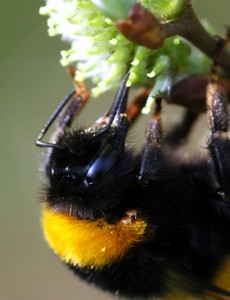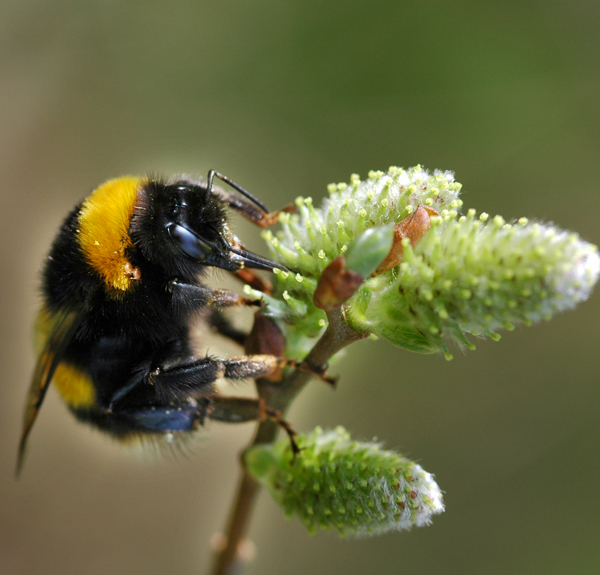Help save our bumblebees

You may well have heard that bees are in trouble. Domestic honeybee hives seem to die more often than they used to, and some of our wild bees have disappeared altogether; for example, three of the UK’s twenty seven bumblebee species have gone extinct. The big, long-term driver of declines has been farming intensification; where once we had plentiful hay-meadows and chalk downland, rich with flowers, we now have flower-free monocultures of wheat or silage grass.
Pesticide use is also contributing to the problem, particularly new generations of systemic, persistent insecticides called neonicotinoids that get into nectar and pollen of both flowering crops and wildflowers. You may wonder what any of this has to do with woodlands? In fact, woodlands are very important to many of our wild bees. Bumblebees need places to nest, usually using old rodent burrows, and the undisturbed woodland floor is replete with suitable hideaways. Many of our solitary bee species nest in small holes in dead trees.
Some of our native trees are also important food sources for bees; willows are vital in spring, for their catkins provide pollen and nectar for hungry queens emerging from hibernation, when little else in the way of flowers is available. A little later they will move on to bluebells on the woodland floor, and hawthorn in the woodland edge. Sycamores are regarded as invasives by some, but bumblebees enjoy the nectar produced from their unimpressive green flowers, and likewise limes are very popular, particularly with our buff- and white-tailed bumblebees. Woodland rides and clearings provide brambles, dead-nettles, woundwort, self-heal, bugle and ground ivy, all much loved by bumblebees. Late in the year, ivy is a fantastic nectar source for honeybees, hoverflies, and many other pollinators.
There are some simple messages if you have woodland, or manage woodland.
- Keep some open areas where herbaceous plants can thrive;
- Leave dead wood standing where possible;
- Encourage willows along the woodland edge and rides;
- Don’t try to clear away all the ivy.
These few simple measures can help woodlands to provide a haven for bees from the stresses of the modern world, somewhere to both nest and find unpolluted flowers.
If you’d like to know more about our wild bees, and about the importance of insect life in making the world go round, you might like to try Dave Goulson’s books, the bestselling “A Sting in the Tale”, and his recently released “A Buzz in the Meadow”.
Blog note : Dave Goulson is Professor of Biology at the University of Sussex and the Goulson Laboratory is devoted to the study of the ecology, behaviour and conservation of bumblebees. It also works on pollinators and pollination, particularly in the sustainable management of pollinators in agro-ecosystems
Comments are closed for this post.
Discussion
[…] Widespread use of insecticides (especially neonicotinoids) […]
Good article. Join the Bumblebee Conservation Trust! http://www.bumblebeeconservation.org


[…] “it is not likely these effects will be restricted to birds” and Professor Goulson (see his woodlands blog) of Sussex University) said “This work flags up the point that this isn’t just about […]
The birds and the bees, insecticides and wildlife | Woodlands.co.uk
24 November, 2015